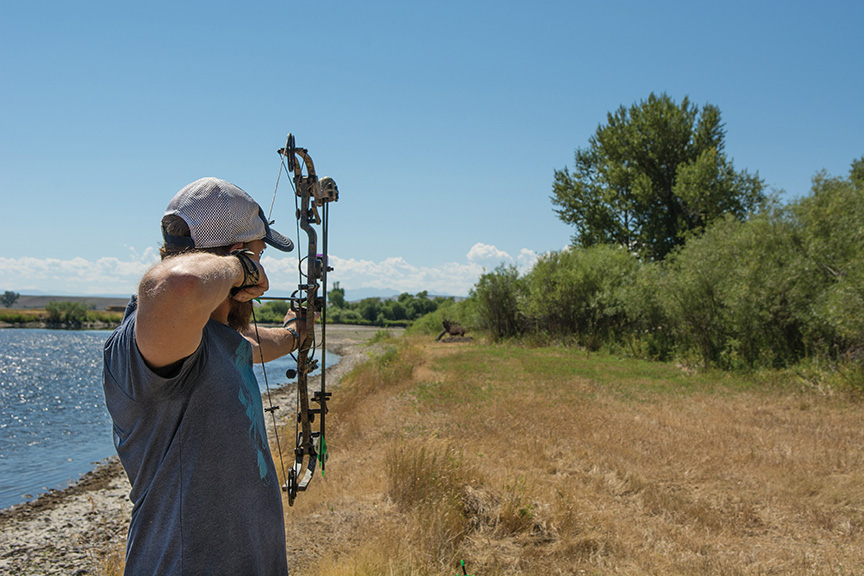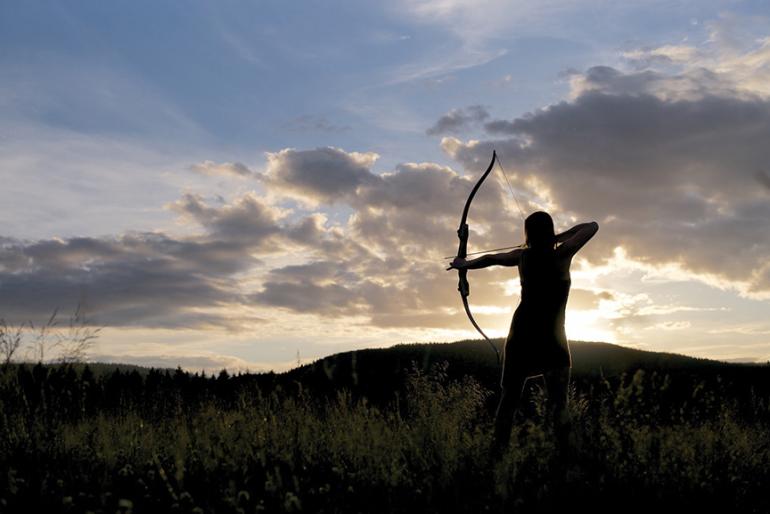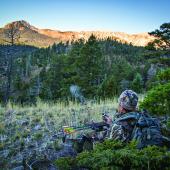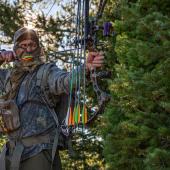The Straight & Arrow
Breaking into bow hunting.
If archery appeals to you, bow hunting might make you downright giddy. The thrill of facing an 800-pound bull elk at 20 yards, his massive frame, piercing bugle, and pungent rut-musk flooding your senses, is one that turns normal people into wide-eyed zealots. Before you know it, the rest of your life will revolve around bow season, to the eventual peril of both marriage and financial stability. Now that you’ve been warned, let’s talk about gear.
Like most endeavors now, bow hunting has benefited greatly from technology, and modern gear is amazingly easy to use. Keep in mind, however, that no amount of high-tech gizmos will replace hours of slinging arrows into a target.
First you’ll need a bow. Aesthetes and traditionalists may opt for an elegant recurve or longbow, but most hunters find a compound bow the best choice. It has pulleys on each end that reduce the amount of force while at full draw, allowing you to hold effortlessly while awaiting the best shot. You’ll need to identify your draw length at one of the local archery shops, and draw weight varies based on your arm strength and specific hunting applications. Expect to spend between $300 and $1,200.
Then, you’ll need sights for aiming. From metal pins to fiber-optic crosshairs and scopes, there is quite a selection nowadays. As always, I recommend simple and robust over complex. Get one with at least three pins, for 20, 30, and 40 yards. You're looking at $50 on the low end, ranging all the way up to $800 for the latest cutting-edge technology.
Next, you’ll need arrows. Carbon is the standard choice—go with something resilient, with high-vis nock and fletching, so you can find it in the weeds when you miss the target. Along with arrows, you’ll need field points for target practice and razor-sharp broadheads for the actual hunt. Make sure they’re all the same weight for consistent shot placement. Expect to spend $70 to $200 for a full set of six.

Another one on the list is the release, which allows a smooth separation from the bowstring when taking a shot, increasing accuracy by a considerable factor. Releases weigh in anywhere from $35 to $150 for high-quality models.
The next purchase is a target. A couple bales of hay will suffice, but dense foam targets are nice and easy to move around. Start close, and gradually move back (up to 50 yards, depending on skill and draw weight) when you get nice groupings of arrows. You can find these as low as $30 and as expensive as $150. Bear in mind that, as with most things, cheaper targets wear down quicker.
Speaking of distance, nothing measures it better, on the range or in the field, than a good rangefinder. It isn't the cheapest piece of equipment, but you can find a quality one for a couple hundred bucks. And when it comes to archery hunting, precision is worth every penny.
Now buy a call. For elk, that means a cow call and a bugle; both come in various designs. Use a grunt tube for deer. Effective calling will take some practice, so watch videos and get tips from experienced friends. Anywhere from $10 for single reeds to $80 for reed sets and bugle tubes.
And there are your basics. No doubt, bow hunting isn't cheap, but planned right you shouldn't have to take out a loan. Plus, once you hear that first bugle or catch sight of a buck between the trees, you'll be thrilled with your investment.












